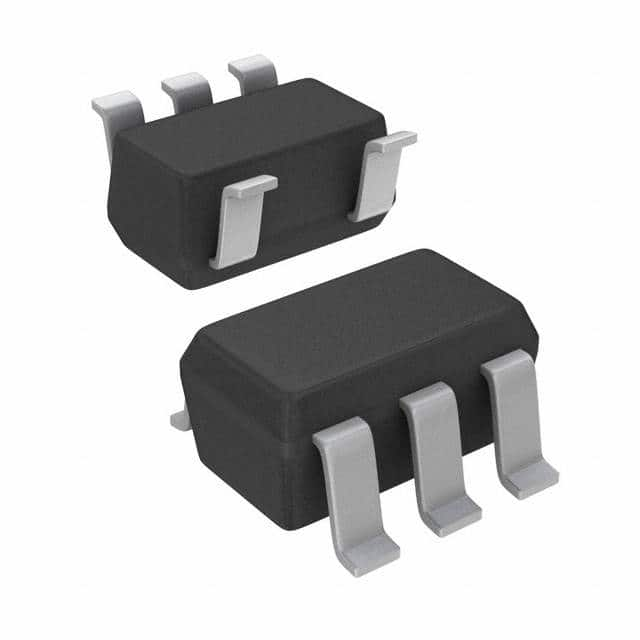Viz Specifikace pro podrobnosti o produktu.

LMV710IDBVR
Product Overview
Category: Integrated Circuit (IC)
Use: The LMV710IDBVR is a low voltage, low power operational amplifier designed for general-purpose applications. It is commonly used in audio amplification, sensor signal conditioning, and other low voltage signal processing circuits.
Characteristics: - Low voltage operation: The LMV710IDBVR operates from a single supply voltage as low as 2.7V, making it suitable for battery-powered applications. - Low power consumption: With a typical quiescent current of only 50µA, the LMV710IDBVR helps conserve energy in portable devices. - Rail-to-rail input and output: This operational amplifier can accept and deliver signals that span the entire supply voltage range, maximizing dynamic range and minimizing distortion. - Small package: The LMV710IDBVR is available in a small SOT-23 package, which makes it ideal for space-constrained designs.
Package/Quantity: The LMV710IDBVR is supplied in tape and reel packaging, with 3000 units per reel.
Specifications
- Supply Voltage Range: 2.7V to 5.5V
- Input Offset Voltage: ±1mV (maximum)
- Gain Bandwidth Product: 3MHz (typical)
- Input Bias Current: 1pA (typical)
- Output Current: 30mA (typical)
- Operating Temperature Range: -40°C to +125°C
Pin Configuration
The LMV710IDBVR has a total of 5 pins arranged as follows:
___________
| |
NC |1 5| V-
IN+ |2 4| OUT
IN- |3 |
|___________|
Pin Description: 1. NC: No Connection 2. IN+: Non-inverting Input 3. IN-: Inverting Input 4. OUT: Output 5. V-: Negative Supply Voltage
Functional Features
- Low voltage operation allows for compatibility with a wide range of power sources.
- Rail-to-rail input and output capability ensures accurate signal processing even at low supply voltages.
- Low power consumption extends battery life in portable applications.
- High gain bandwidth product enables the amplification of high-frequency signals.
- Stable operation over a wide temperature range (-40°C to +125°C) ensures reliability in various environments.
Advantages and Disadvantages
Advantages: - Low voltage operation and low power consumption make it suitable for battery-powered devices. - Rail-to-rail input and output capability provides maximum dynamic range and minimizes distortion. - Small package size allows for space-efficient designs.
Disadvantages: - Limited output current may not be suitable for driving heavy loads. - Input offset voltage may introduce small errors in precision applications.
Working Principles
The LMV710IDBVR is based on a differential amplifier configuration, where the difference between the non-inverting (IN+) and inverting (IN-) inputs is amplified. The amplified output is then available at the OUT pin. By adjusting the feedback network, the gain and other characteristics of the amplifier can be tailored to specific application requirements.
Application Field Plans
The LMV710IDBVR finds applications in various fields, including: 1. Audio amplification in portable devices such as smartphones, tablets, and MP3 players. 2. Sensor signal conditioning in automotive systems, industrial automation, and medical equipment. 3. Low voltage signal processing in battery-powered IoT devices and wearable technology.
Alternative Models
Some alternative models that offer similar functionality to the LMV710IDBVR include: - MCP6001 from Microchip Technology - TS912 from STMicroelectronics - MAX40660 from Maxim Integrated
These alternatives can be considered based on specific application requirements and availability.
Word count: 511 words
Seznam 10 běžných otázek a odpovědí souvisejících s aplikací LMV710IDBVR v technických řešeních
Sure! Here are 10 common questions and answers related to the application of LMV710IDBVR in technical solutions:
Question: What is LMV710IDBVR?
- Answer: LMV710IDBVR is a low-power, low-voltage operational amplifier (op-amp) designed for various technical applications.Question: What is the supply voltage range for LMV710IDBVR?
- Answer: The supply voltage range for LMV710IDBVR is typically between 1.8V and 5.5V.Question: What is the typical input offset voltage of LMV710IDBVR?
- Answer: The typical input offset voltage of LMV710IDBVR is around 1.5mV.Question: Can LMV710IDBVR operate in single-supply configurations?
- Answer: Yes, LMV710IDBVR can operate in both single-supply and dual-supply configurations.Question: What is the bandwidth of LMV710IDBVR?
- Answer: The bandwidth of LMV710IDBVR is typically around 10MHz.Question: Is LMV710IDBVR suitable for low-power applications?
- Answer: Yes, LMV710IDBVR is designed for low-power applications, making it ideal for battery-powered devices.Question: Does LMV710IDBVR have rail-to-rail inputs and outputs?
- Answer: Yes, LMV710IDBVR has rail-to-rail inputs and outputs, allowing it to handle signals close to the supply rails.Question: Can LMV710IDBVR drive capacitive loads?
- Answer: Yes, LMV710IDBVR is capable of driving capacitive loads up to 100pF.Question: What is the typical quiescent current of LMV710IDBVR?
- Answer: The typical quiescent current of LMV710IDBVR is around 50µA.Question: What are some common applications for LMV710IDBVR?
- Answer: LMV710IDBVR can be used in various applications such as sensor interfaces, battery-powered systems, portable devices, and low-power audio amplification.
Please note that these answers are general and may vary depending on specific datasheet specifications and application requirements.

